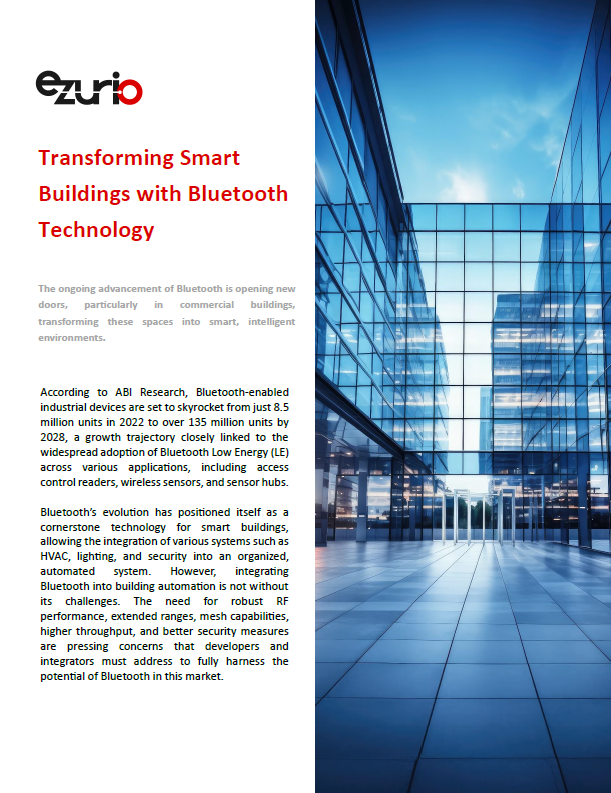
Transforming Smart Buildings with Bluetooth Technology
The ongoing advancement of Bluetooth is opening new doors, particularly in commercial buildings, transforming these spaces into smart, intelligent environments.
Published on March 26, 2024

According to ABI Research, Bluetooth-enabled industrial devices are set to skyrocket from just 8.5 million units in 2022 to over 135 million units by 2028, a growth trajectory closely linked to the widespread adoption of Bluetooth Low Energy (LE) across various applications, including access control readers, wireless sensors, and sensor hubs.
Bluetooth’s evolution has positioned itself as a cornerstone technology for smart buildings, allowing the integration of various systems such as HVAC, lighting, and security into an organized, automated system. However, integrating Bluetooth into building automation is not without its challenges. The need for robust RF performance, extended ranges, mesh capabilities, higher throughput, and better security measures are pressing concerns that developers and integrators must address to fully harness the potential of Bluetooth in this market.
Read this paper to learn how commercial buildings are utilizing Bluetooth to collect data, manage its network, and become an IoT connected smart building.
 Laird Connectivity is now Ezurio
Laird Connectivity is now Ezurio